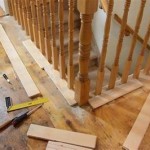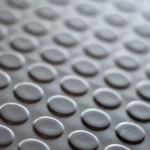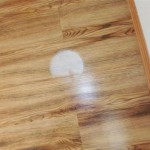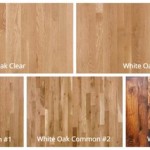Understanding 1/2" Thick Unfinished Red Oak Flooring
Hardwood flooring remains a popular choice for residential and commercial spaces, prized for its durability, timeless aesthetic, and ability to increase property value. Among the various options available, 1/2" thick unfinished red oak flooring stands out as a versatile and cost-effective solution. This article delves into the specifics of this type of flooring, exploring its characteristics, advantages, disadvantages, applications, and installation considerations.
Red oak, scientifically known as *Quercus rubra*, is a hardwood species native to North America. It is characterized by its reddish hue, prominent grain pattern, and good hardness. The Janka hardness rating, which measures a wood's resistance to denting and wear, for red oak typically falls around 1290, making it a suitable choice for areas with moderate foot traffic. The "unfinished" designation indicates that the wood has not been pre-stained or sealed, providing the homeowner with complete control over the final appearance and protective coating.
The 1/2" thickness is a key factor to consider. It is thinner than traditional 3/4" solid hardwood flooring, which affects its structural properties and installation options. While not as robust as its thicker counterpart, 1/2" red oak offers advantages in terms of cost, ease of installation in certain situations, and compatibility with existing floor heights.
Key Point 1: Advantages of 1/2" Thick Unfinished Red Oak Flooring
Several advantages contribute to the appeal of 1/2" thick unfinished red oak flooring. A primary benefit is its cost-effectiveness. Due to the reduced amount of raw material required, it is generally more affordable than 3/4" solid hardwood flooring. This can make it an attractive option for larger spaces or projects with budget constraints.
Another advantage lies in its versatility. The unfinished nature of the flooring allows for complete customization. Homeowners can choose from a wide range of stains and sealants to achieve their desired color and finish. Whether a dark, contemporary look or a light, natural aesthetic is preferred, the possibilities are effectively unlimited. This flexibility makes it easy to coordinate the flooring with existing décor and personal preferences.
Furthermore, the thinner profile of 1/2" red oak can simplify installation in specific situations. It is often suitable for installation over existing subfloors, such as concrete slabs, where height restrictions may be a concern. This can save time and labor costs associated with removing existing flooring. The thinner profile also results in less vertical change from the subfloor, which can reduce the need for transitions into adjacent rooms with different floor coverings.
Additionally, 1/2" thick red oak can be more environmentally friendly. Utilizing less wood per square foot can contribute to more sustainable forestry practices. While sourcing from responsibly managed forests is crucial regardless of the flooring thickness, the reduced material usage inherently contributes to resource conservation.
Finally, red oak is a relatively easy wood to work with, and can be found readily at most lumber yards and home stores. This makes it easier to fill orders and get the finish that you want.
Key Point 2: Disadvantages and Considerations
While 1/2" thick unfinished red oak offers numerous advantages, it also presents certain disadvantages and considerations that must be acknowledged. Its thinner profile inherently affects its structural integrity compared to thicker solid hardwood flooring.
One major concern is stability. Thinner flooring is generally more susceptible to warping and cupping in response to fluctuations in moisture levels. Proper acclimation before installation is crucial to minimize these risks. Acclimation involves allowing the flooring to adjust to the ambient temperature and humidity of the installation environment for a specific period, typically several days to a week or more.
Another consideration is its impact resistance. Because it is thinner, it is more prone to denting and damage from heavy objects or high-impact activities. While red oak itself is a relatively hard species, the reduced thickness diminishes its overall resistance to wear and tear. In high-traffic areas or homes with pets or children, this may be a significant concern.
Furthermore, 1/2" thick hardwood may not be suitable for all subfloors. Uneven or unstable subfloors can exacerbate the issues of warping and cupping. It is essential to ensure that the subfloor is level, clean, and structurally sound before installation. Proper subfloor preparation is critical to the long-term performance of the flooring.
Resanding potential is also reduced with thinner oak. While hardwood floors can be sanded and refinished multiple times to remove scratches and restore their appearance, 1/2" thick flooring offers less material for sanding. This limits the number of times the floor can be refinished over its lifespan. This should be taken into consideration when determining the budget of your floor.
Finally, finding a qualified installer with experience in handling 1/2" thick hardwood is crucial. Its lower profile and other considerations need to be taken into account. An experienced installer can help to reduce warping, ensure proper spacing, and get the look that you want!
Key Point 3: Installation and Finishing Procedures
The installation and finishing of 1/2" thick unfinished red oak flooring require careful attention to detail to ensure a successful outcome. The installation method typically involves either nailing, gluing, or a combination of both.
Nailing is a common method for installing hardwood flooring. However, with 1/2" thick flooring, the nails must be properly sized and spaced to avoid splitting the wood. A pneumatic nailer designed for hardwood flooring is recommended. The subfloor must also be thick enough to provide adequate holding power for the nails. If, for example, you are running your hardwood floor atop plywood, then you may consider screwing the plywood down into the sub floor to give the wood an added level of support.
Gluing down the flooring directly to the subfloor is another option. This method provides a more secure bond and helps to minimize movement and noise. However, it requires a perfectly level and clean subfloor. The appropriate adhesive must be selected based on the subfloor material and the flooring manufacturer's recommendations. This makes it essential to reach out to a professional to ensure that the proper products are used.
Regardless of the installation method, proper acclimation of the flooring is paramount. The flooring should be stored in the installation environment for at least several days before installation to allow it to adjust to the local temperature and humidity levels. It is critical to follow the flooring manufacturer's recommendations for acclimation.
Once the flooring is installed, the finishing process can begin. This involves sanding the floor to create a smooth, even surface. Multiple passes with different grit sandpaper may be necessary. All sanding dust must be thoroughly removed before applying stain or sealant.
The choice of stain and sealant is a matter of personal preference. Oil-based stains and sealants typically provide a deeper, richer color and offer good durability. Water-based products are lower in VOCs (volatile organic compounds) and may be a more environmentally friendly option. It is important to follow the manufacturer's instructions for application and drying times and remember to account for the cure time of any product used.
Proper maintenance is crucial to preserving the beauty and longevity of 1/2" thick unfinished red oak flooring. Regular sweeping or vacuuming to remove dirt and debris is essential. Spills should be cleaned up promptly to prevent staining or water damage. Using floor protectors under furniture legs can help to prevent scratches and dents and keep the wood looking new.
The use of proper cleaning products or stain removers will go a long way to ensuring the lasting quality of your work. Proper care will go a long way to ensuring that the wood looks new!
In summary, 1/2" thick unfinished red oak flooring presents a viable option for those seeking a cost-effective and customizable hardwood flooring solution. However, its thinner profile necessitates careful consideration of its structural limitations, subfloor requirements, and the importance of proper acclimation and installation techniques. By understanding these factors, homeowners and contractors can make informed decisions and achieve a beautiful and durable flooring installation.

1 2 X Unfinished Hardwood Floors Red Oak Flooring

Select Red Oak Unfinished Solid Hardwood Flooring 3 8 X 1 2

1 2 X 3 4 Common Red Oak Unfinished Nature Wood Floors

1 2 X Random Length Select Better Red Oak Flooring

Henry County Hardwoods Unfinished Solid Red Oak Hardwood Flooring Clear Grade 3 4 Inch Thick X 1 2 Wide Square Foot Chicago

Unfinished Red Oak 3 Common 2 1 4 Solid Hardwood Xulon Flooring Woodwudy Whole

Henry County Hardwoods Unfinished Solid Red Oak Hardwood Flooring 1 Common 3 4 Inch Thick X 2 Wide Square Foot Chicago

2 1 4 X 3 Red Oak Common Unfinished Solid Hardwood Flooring

Unfinished Red Oak 2 1 4 In W X 3 T 84 Smooth Traditional Solid Hardwood Flooring 19 5 Sq Ft Carton The Department At Com

1 2 X Random Length Common Red Oak Flooring








